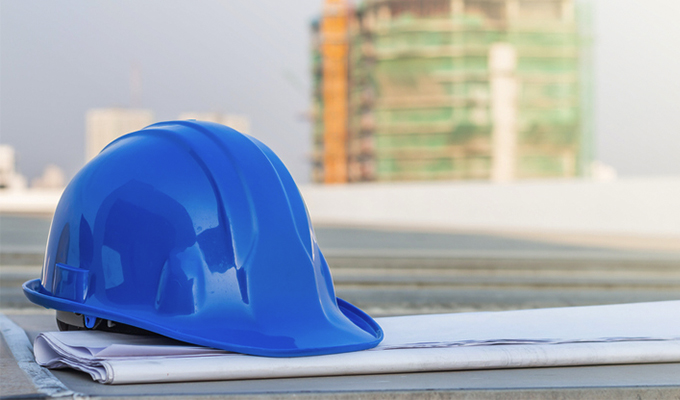A building’s exterior walls, floors, doors, roof, and windows are crucial for insulation, pest management, and moisture control. A high-performance building envelope also protects against pressure damage from wind and improves a structure’s energy efficiency. Here are eight factors to consider when designing a tight building envelope.
Thick roofs designed to withstand wind, rain, and hail make a building safer and more comfortable. Waterproofing a roof is one of the most important aspects of constructing a tight building envelope. Torch-applied and liquid-applied coatings, metallic aluminum or zinc coatings, and cementitious membranes—usually made from a blend of cement and fillers—are some of the most effective waterproofing systems.
Windproofing is also paramount in hurricane-prone regions. South Carolina’s Eye of the Storm house, made entirely of concrete and steel, is a stand-out in the architectural world for its monolithic design. The dome-shaped building does not have a separate roof, giving it a low drag coefficient that keeps it safe during hurricane-force winds.
Highly reflective white topcoats can reflect heat off of roofs in warm climates. Rooftop gardens are another way to prevent heat from seeping through a roof and into a building.
Creating a tight seal around windows and doors prevents rain and dust from entering a dwelling. Air sealing also prevents leaks around electrical wiring, plumbing, and ducts. For example, the adhesive attachment of structural framing to sheathing is a form of air sealing. Other solutions for creating a continuous air barrier include house wrap, air-tight drywall, SIGA membranes, and ZIP systems.
Vapor barriers are an important aspect of any high-performance building envelope. Keeping moisture out prevents molding, rusting and drywall damage, extending a building’s life span. It also protects workers against falls during construction and keeps tenants more comfortable. Common vapor barrier materials include foil-faced insulation, vapor barrier paint, and polyethylene sheeting.
4. Install Continuous Insulation
The ASHRA 90.1: Energy Standard for Buildings Except Low-Rise Residential Buildings defines continuous insulation as being continuous across structural members without thermal bridges. The exception is across service openings and fasteners. Contractors can install continuous insulation in a building’s interior or exterior.
The 2012 International Energy Conservation Code requires continuous insulation in building envelopes and most climate zones. Builders should follow the code for guidance when selecting how much insulation to use above-grade walls, below-grade slabs and on floors, roofs, and walls throughout the U.S.
Most materials used for continuous insulation are a type of rigid foam, including:
- Expanded Polystyrene (EPS)
- Graphite Polystyrene (GPS)
- Extruded Polystyrene (XPS)
- Polyisocyanurate (Polyiso)
Of these options, EPS is one of the most common choices. In addition to being lightweight and easy to transport, EPS has high mechanical resistance and is simple to install, making it excellent for building envelope insulation. It is also versatile—builders can install it under floors and grade as well as in roofs and walls. It dries quickly and lasts a long time.
5. Choose Insulated Windows and Doors
Single-pane windows leak heat and cold into a structure, compromising its energy efficiency rating. Therefore, thick, multi-paned models are a crucial component of a high-performance building envelope. Builders can make a structure even more energy efficient by choosing solar-tinted glass that reflects UV rays.
Opaque exterior doors with foamed-in-place insulation between their exterior and interior metal skins are typically better insulated than glass. Aluminum doors with thermally broken frames and insulating glass units are also good choices for a building’s exterior.
6. Install Proper Mechanical Ventilation
It goes without saying, but the more insulated a building is from outside airflow, the more heavily it will rely on mechanical ventilation. Contractors should install energy-efficient HVAC systems in new builds that incorporate a high-performance building envelope. Doing so will maximize occupant comfort and energy efficiency.
One of the simplest ways to make a building more protected from the elements—and, thus, improve occupant comfort—is to incorporate shading elements into the design. Fixed overhangs and slats can keep buildings cooler in sunny locales, as can orienting buildings to minimize sun exposure in the heat of the day.
8. Choose High-Quality Insulation
The type of insulation contractors use in a building envelope matters just as much—if not more—than the amount they use. Rockwool, cellulose, fiberglass, and polyurethane are energy-efficient and perfect for use in a building envelope. Builders can install them in many forms, including batts, rolls, rigid board, loose-fill, and spray-in-place types.
Creating a High-Performance Building Envelope
Insulating a building against the elements protects it against wind, dust, rain, and pests. In addition to making the structure more energy efficient, a high-performance building envelope keeps occupants comfortable by minimizing temperature fluctuations. Builders should keep the importance of a tight building envelope in mind throughout the planning and construction process.
About the Author
Emily Newton is an industrial writer who specializes in covering how technology is disrupting industrial sectors. She’s also the editor-in-chief of Revolutionized where she covers innovations in industry, construction, and more.


